Mediterranean dream destinations don’t get much better than Santorini and the Amalfi Coast. For decades, these coastal havens have captivated travelers with their stunning views, crystal-clear waters, and rich cultural experiences.
Though they’re often mentioned in the same breath as premier Mediterranean getaways, they couldn’t be more different in what they offer visitors. Let’s explore 20 key differences between Santorini and the Amalfi Coast that might help you decide which better matches your travel style.
Geographical Formation

Santorini wasn’t always the crescent-shaped island we know today – it emerged from a catastrophic volcanic eruption around 1600 BCE that created its distinctive caldera. The Amalfi Coast, however, formed through an entirely different process – limestone mountains meeting the Mediterranean Sea – which produced dramatic cliffs shaped by millions of years of natural erosion.
This fundamental geological contrast explains why these places feel so utterly different despite sharing the same sea.
Signature Colors

Anyone who’s seen a travel brochure knows Santorini’s iconic look – pristine white-washed buildings topped with vibrant blue domes that pop against the azure sky. Head to the Amalfi Coast, and you’ll encounter something completely different – a cheerful rainbow of pastel-colored buildings in shades of yellow, pink, and orange cascading down steep cliffside terraces.
These aren’t just aesthetic choices – they reflect distinct cultural traditions and practical building approaches developed across centuries.
Like Travel Pug’s content? Follow us on MSN.
Beach Experience

Walk along Santorini’s shores, and you’ll find something unusual – beaches with volcanic sand in striking shades of black, red, and even white – creating landscapes that feel almost otherworldly. The Amalfi experience couldn’t be more different; its coastline features intimate pebbled coves rather than expansive beaches, many accessible only by boat or down steep pathways from cliff-top towns.
Don’t expect to find miles of sandy shores here – the dramatic topography simply doesn’t allow it.
Sunset Viewing
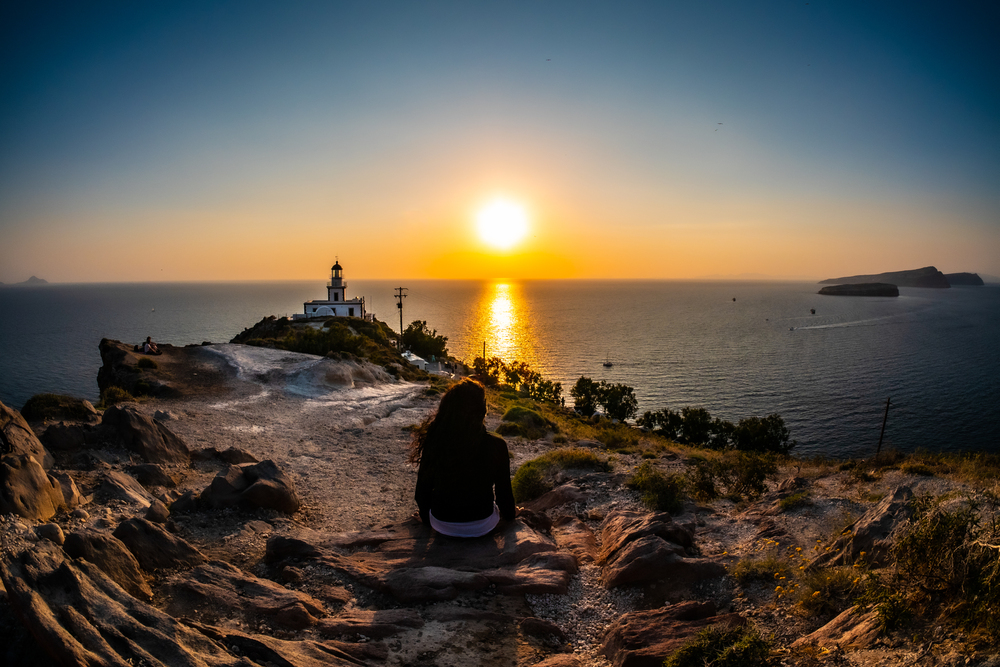
Ask seasoned travelers, and they’ll tell you that Santorini offers possibly the world’s most spectacular sunset views from Oia, where the sinking sun transforms the caldera into a canvas of golden and crimson hues. Amalfi sunsets work differently – the sun disappears behind mountains rather than into the sea – casting long, golden rays across terraced cliffs and Mediterranean waters below.
The same natural phenomenon creates entirely different magic depending on which destination you choose.
Accessibility

Getting to Santorini requires commitment – it’s an island accessible only by airplane or ferry, creating that delicious sense of leaving the ordinary world behind. The Amalfi Coast – despite feeling worlds away – connects directly to mainland Italy by road, making it reachable by car or bus from Naples or Rome (though the narrow coastal highway presents its white-knuckle adventure).
This fundamental accessibility difference shapes not just how you’ll arrive but the overall atmosphere of your vacation.
Like Travel Pug’s content? Follow us on MSN.
Local Cuisine

Taste Santorini’s cuisine, and you’re experiencing food shaped by volcanic soil – exceptionally flavorful tomatoes, unique fava beans, and white eggplants feature prominently in dishes like tomatokeftedes (tomato fritters) that you won’t find elsewhere. Amalfi’s food culture – equally spectacular but totally distinct – revolves around the region’s famous lemons, fresh-caught seafood, and handmade pasta traditions, with specialties like scialatielli ai frutti di mare (seafood pasta) showcasing the bounty of the Tyrrhenian Sea.
These culinary differences aren’t just about taste – they tell the story of what each landscape can produce.
Wine Culture

Santorini’s winemaking tradition defies conventional wisdom. Grapevines grow in volcanic soil using the unusual kouloura method, where vines are trained into basket shapes to protect them from punishing winds. Drive along the Amalfi Coast, and you’ll spot something entirely different—precarious terraced vineyards producing Costa d’Amalfi DOC wines from varieties like Falanghina and Biancolella, somehow thriving on steep limestone slopes.
Wine enthusiasts find fundamentally different tasting experiences in each region, with distinct minerality and character reflecting the contrasting terroir.
Historical Significance
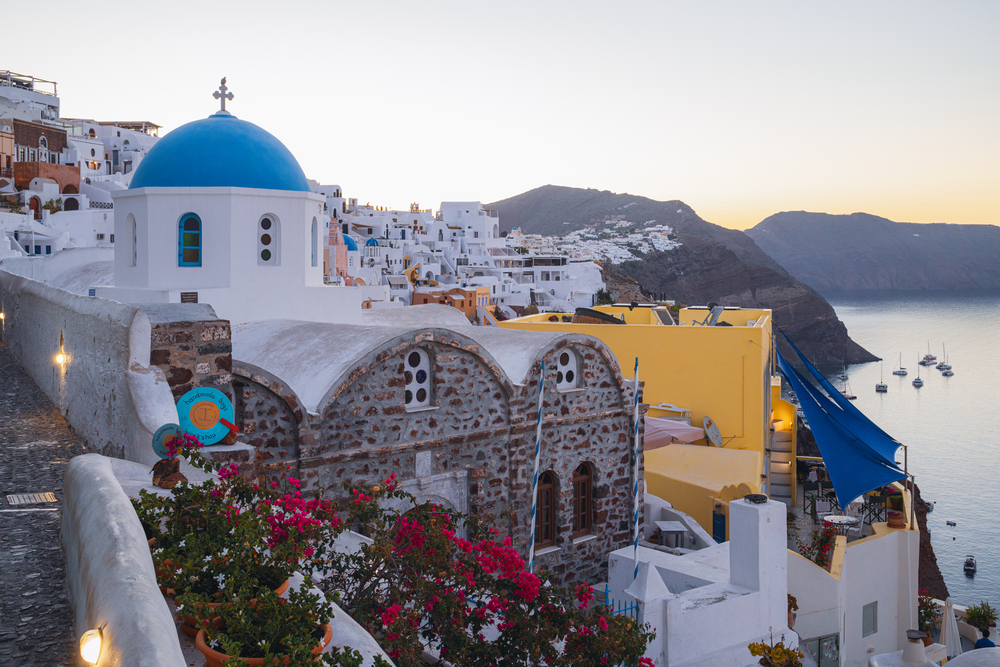
History buffs find themselves transported to entirely different eras depending on which destination they choose. Santorini houses the remarkable remains of the Minoan settlement of Akrotiri – preserved by volcanic ash around 1600 BCE, much like Pompeii.
The Amalfi Coast tells a different historical story through its medieval architecture from its days as a powerful maritime republic during the Byzantine era and Middle Ages. These contrasting historical legacies offer visitors windows into entirely different chapters of Mediterranean history.
Like Travel Pug’s content? Follow us on MSN.
Tourist Seasons

Timing matters enormously when visiting either destination. Santorini experiences an intensely concentrated high season from June through September, with many businesses shuttering completely during the winter months.
The Amalfi Coast offers slightly more breathing room with a longer tourist season stretching from April through October. However, smaller towns become equally quiet in winter while larger ones like Sorrento maintain some year-round activity.
This seasonal rhythm doesn’t just determine when to visit – it fundamentally changes the character of the experience.
Price Points
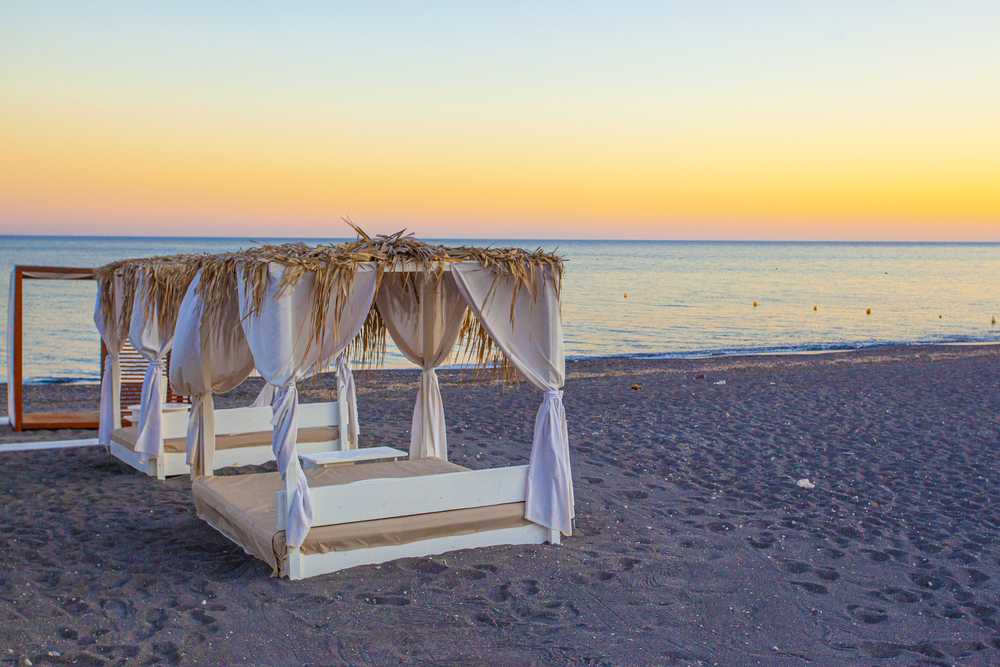
Budget-conscious travelers take note: Santorini generally demands higher accommodation prices, especially for those coveted rooms with caldera views, which command premium rates that have skyrocketed in recent decades. The Amalfi Coast presents a more varied pricing landscape across its different towns, though neither destination could be considered a bargain by Mediterranean standards.
Savvy travelers need different financial strategies depending on which coastal paradise they choose.
Swimming Waters
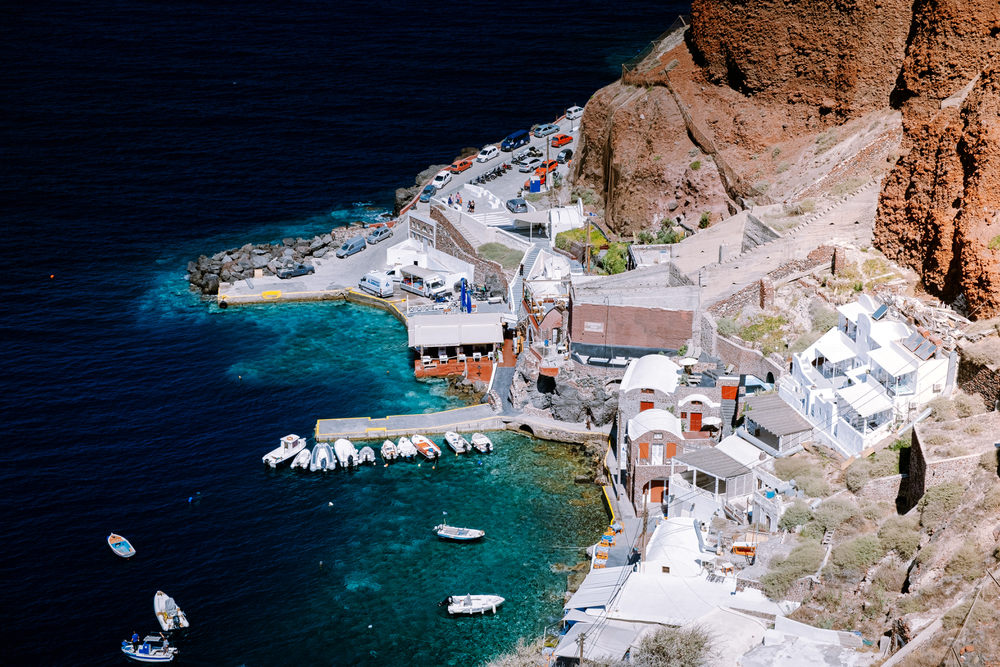
Dive into the sea around Santorini, and you’ll immediately notice something distinctive – deep, open waters surrounding the caldera with dramatic depth changes just offshore, creating an almost oceanic swimming experience. Amalfi’s swimming spots feel entirely different – typically protected coves and bays with gentler slopes into the Tyrrhenian Sea that feel more intimate and sheltered.
These aquatic differences appeal to different types of swimmers and water enthusiasts.
Like Travel Pug’s content? Follow us on MSN.
Transportation Options

Getting around Santorini typically means relying on buses, taxis, or rental vehicles (particularly motorbikes) to navigate the crescent-shaped island’s limited road network. The Amalfi Coast offers a more varied transportation ecosystem, including scenic SITA buses that hug cliff edges, ferries connecting coastal towns, and the historic Circumvesuviana train that links the region to Naples.
These transportation differences significantly impact how you’ll experience each destination’s rhythm and flow.
Nightlife Experience

After dark, these destinations reveal entirely different personalities. Santorini’s nightlife revolves around sophisticated sunset cocktails in Oia and Fira, with a handful of clubs but primarily upscale lounges offering caldera views under starlit skies.
Amalfi evenings unfold at a different tempo with more subdued entertainment focused on leisurely dinners, traditional passeggiata (evening strolls), and occasional live music in town squares rather than clubbing. These contrasting after-hours scenes reflect fundamentally different approaches to evening entertainment across Greek and Italian traditions.
Day Trip Possibilities

Staying in Santorini means your day trip options focus mainly on boat excursions to nearby islands like Thirassia and the volcanic hot springs within the caldera itself. Choose the Amalfi Coast as your base, and suddenly, you’re within reach of some of Italy’s most iconic sites—Pompeii, Herculaneum, Naples, Capri, and numerous other Campania highlights await within easy reach.
This fundamental difference in excursion possibilities shapes how travelers structure their itineraries and often determines the ideal stay duration.
Like Travel Pug’s content? Follow us on MSN.
Architectural Heritage
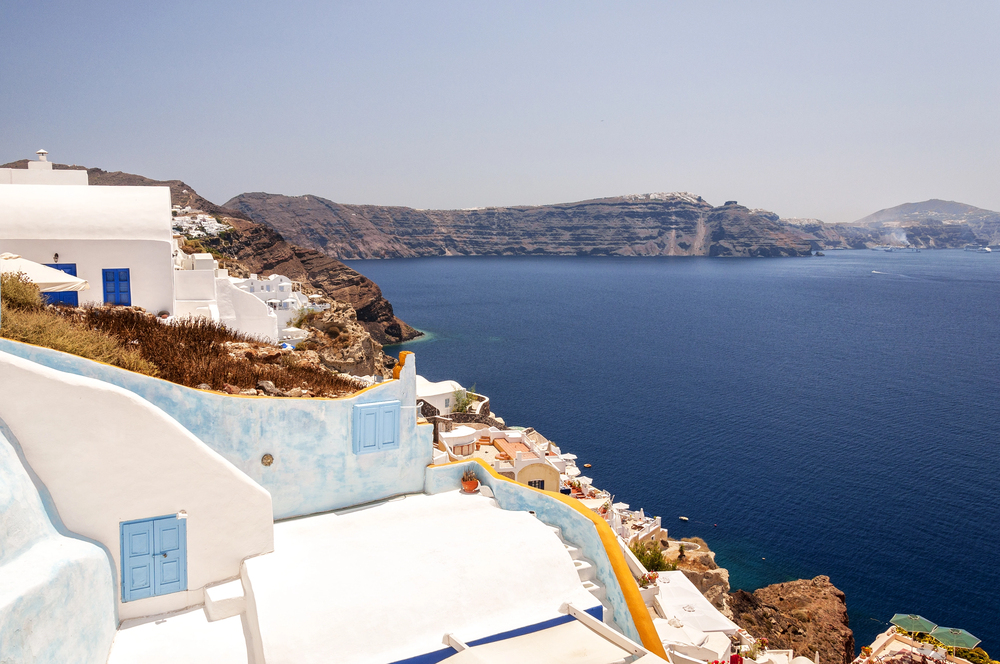
Walk through Santorini’s villages, and you’ll discover unique cave houses carved directly into volcanic cliffs, creating distinctive Cycladic settlements that have adapted to earthquake risks over centuries. The Amalfi Coast showcases something completely different—medieval Italian architecture with unmistakable Moorish influences, including majolica-tiled church domes and Renaissance-inspired cliffside villas.
These architectural approaches aren’t merely aesthetic choices but practical adaptations to very different environmental challenges.
Crowd Dynamics

High season in Santorini means navigating extremely concentrated crowds in narrow caldera pathways, mainly when cruise ships arrive and disgorge thousands of day-trippers. The Amalfi Coast handles its popularity differently, with crowds spreading across multiple towns connected by the coastal highway, creating vehicular congestion rather than pedestrian bottlenecks.
Understanding these distinct crowd patterns helps visitors plan timing and accommodations more strategically to minimize frustration.
Photography Aesthetics

Photographers find completely different visual languages in these destinations. Santorini offers stark white and blue geometric compositions against deep azure seas, creating instantly recognizable, almost abstract images that dominate social media. The Amalfi Coast presents more varied visual opportunities with colorful vertical towns, terraced lemon groves, and sinuous roads carved into Mediterranean cliffs.
These aesthetic differences attract photographers seeking different types of imagery and atmospheric qualities.
Like Travel Pug’s content? Follow us on MSN.
Shopping Specialties

Shopping in Santorini means browsing locally crafted jewelry, art inspired by ancient Cycladic designs, and products derived from the island’s volcanic heritage. The Amalfi Coast offers entirely different treasures – handmade paper from Amalfi town itself, hand-painted ceramics from Vietri, bottles of limoncello, and custom sandals crafted while you wait in traditional workshops.
These shopping differences reflect distinct craft traditions that have evolved separately over generations in each region.
Luxury Accommodations

Splurging on accommodation means different experiences in each destination. Santorini specializes in boutique cave hotels built directly into the caldera cliff face, offering private plunge pools with sweeping panoramic views. The Amalfi Coast’s approach to luxury involves converted historical palazzos and aristocratic villas, often featuring terraced gardens descending dramatically toward the sea.
These contrasting luxury experiences reflect both the physical constraints and historical development patterns unique to each destination.
Local Festivals and Events

Experience Santorini during a celebration, and you’ll likely encounter Greek Orthodox traditions through local panigiria—St.’s Day festivals featuring bouzouki music, traditional dance, and communal meals that bring entire villages together. The Amalfi Coast celebrates differently, with elaborate Catholic processions during Holy Week and internationally renowned summer music festivals like Ravello’s classical concerts held in gardens perched high above the Mediterranean.
These cultural events offer visitors profoundly different windows into local traditions that have shaped community life for centuries.
Like Travel Pug’s content? Follow us on MSN.
The Soul of Each Destination
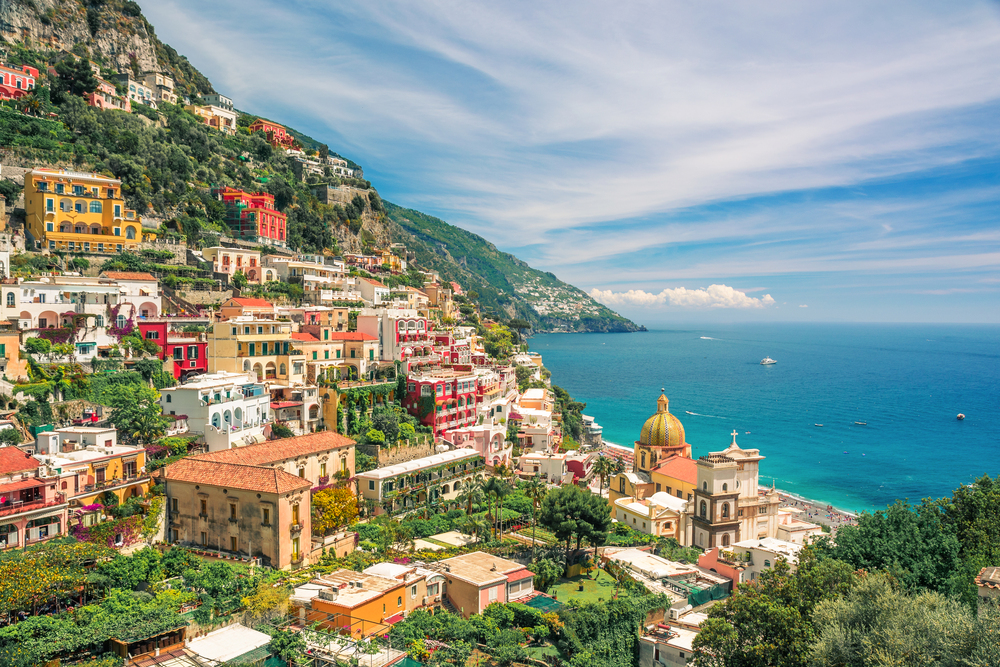
Beyond all measurable differences lies something more elusive—each place’s essential character. Santorini embodies dramatic beauty born from catastrophic natural forces, creating landscapes that feel suspended between elements.
The Amalfi Coast captures something entirely different – the essence of human persistence and adaptation, with communities that have clung to cliffs for a millennium, achieving remarkable harmony between natural beauty and human achievement. These spiritual differences often explain why travelers feel mysteriously drawn toward one destination over the other, beyond all practical considerations.
More from Travel Pug

- Cities Growing so Fast You Won’t Recognize Them in 10 Years
- 13 Destinations Where Tourists Regularly Regret Their Trip
- 20 Obscure WWII Sites Even History Buffs Don’t Know About
- 10 Under-the-Radar Mountain Towns That Are Both Affordable and Beautiful
- 20 Abandoned Places That Feel Like Real-Life Post-Apocalyptic Movie Sets
Like Travel Pug’s content? Follow us on MSN.
